Ryan Hall's Blog, page 223
August 26, 2016
Tech Buzz: Lumo Run is a Next Generation Wearable Device
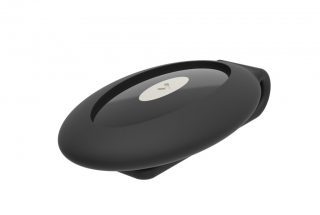
The sensors inside the Lumo Run tracking pod can tell you a lot about your running.
The new Lumo Run ($99) from Lumo Body Tech combines a small sensor pod (that can be clipped to a pair of running shorts) with a GPS run and coaching app. The system currently measures five running form metrics, Lumo calls them the 5 pillars of running form: pelvic rotation, pelvic drop, cadence, bounce and brake. According to Lumo, improve the pillars and you can become a more efficient faster runner with less chance of injury.
Lumo Run is the first form and exercise tool I have seen and used that I am actually following. I am cross-train lazy, hate the gym and after 45 years of running have a real need to work on my form, particularly my stiff hips and pelvis.
Lumo Run does not focus on the formerly oh-so-popular heel vs. midfoot strike or strictly on cadence and the lower portion of the legs as many run form tech companies do. Instead, Lumo targets the center of your body, the pelvis and hips the area that is the driving engine of running. I think their approach is far more actionable than trying to change foot strike, if this is really even possible for most without dealing with the areas of the body, the “core,” which I think really determine form and running efficiency.
The app includes a pre-run video demo of the form tip du jour (system or user selected), optional configurable in run audio live feedback for the metric and for tip reminders, and then post run exercises to improve the metrics, your run stats, and a view of trends for all of the metrics.
Overall the system is very well-executed, from flawless communication of sensor to app to the algorithms analyzing the data which have been extensively tested and verified in development by testing against sophisticated lab run and biomechanics equipment, stuff well out of the the reach of the average runner. My testing and their improvements and fixes as I run with Lumo Run tell me they will launch with a very polished and effective run form system.
The sensor pod itself is a marvel of engineering and includes:
9-axis IMU (Inertial Motion Measuring Unit)
Accelerometer
Gyroscope
Magnetometer
Barometer
Low-energy Bluetooth
Vibration motor
The app itself is very well done. The screens are clear and easy to understand, yet just data rich enough for even a geek. Sure more extensive graphing and feedback on and comparisons of two metrics at once on a given run. might make some of us geeks happier but for 90 percent of users there is just the right amount of data and flexibility to set feedback to preferences.
During my testing, I provided Lumo feedback. I suggested for example if you are way off the benchmark for a metric, start with more reasonable goals. For me it is cadence and instead of the “standard” 180 steps per minute Lumo is trying to get me to 175. Reasonable goals are implemented in the release version now on sale.
What I do know is working for me is to focus on the audio tips while running. They are easy to understand and do. Recently, as I worked on pelvic rotation, the app suggested thinking about pushing off on a skateboard and rolling my shoulders down and back. For cadence it suggests imagining running through puddles without getting wet and elbowing someone behind me. My cadence has improved but the trick is to have the strength to maintain the form when tired, the exercises are key. New tips appear all the time for the different metrics.
The artificial intelligence in the system is considerable, determining for each run a personalized form element to work on, setting a reasonable goal upfront if you are not close to the gold standard goal metric but also allowing you to chose whichever metric you prefer. I think the app overemphasizes cadence, which for me is highly pace dependent. I often head for Pelvic Rotation, my weakest metric. Posture tips are also be periodically given via the audio feedback for example: “roll your shoulders down and back,” “engage your core,” “look ahead.” I am unclear if they are triggered by your posture, but I believe they may be.
I have welcomed the positive feedback chimes and jumped a bit when I heard the negative tuba chime-when you go off the goal for a period of time. A bit of adjustment may be required by Lumo as the negative chime is often rapidly followed, when you get back on track, by a positive chime which can be a bit confusing. You can turn such instant feedback on or off. You can also turn on or off the easy to “feel” and do the audio form tips you hear periodically. I focus on recalling the tip when I hear the negative chime if my metric is headed off target. At the end of each interval, one mile for me but configurable by distance, the app will tell you how you measured up to the selected metric for that interval. If you are having an “on” or “off” day after a while the coaching seems to ease off in its frequency. Overall the feedback is extremely well done and timed. Never too much. After all the purpose is to improve form.
Walking through a Run
Recently I had very tired legs after a 500-mile drive and a brisk, 8-mile trail run the day before, so I went for an easy trail run in Park City’s Round Valley.
The sensor pod (pictured above) clips to the rear of your shorts at mid back at the tailbone. Shorts and capris with a special pocket and instant feedback button are also available. A snug, no slip waistband is very important. The ridges that hold the pod to the shorts are not as “sharp” as I would like to see. No issues on the run, but caution removing shorts as you may lose the pod if shorts are twisted. (I lost one at a race … I think in the porta potty.)
The pod itself slips out of a rubber like carrier for USB charging. The tip of the pod snaps off and has a thin leash, caution advised as it is easy to break the leash. I did on my first pod. Battery life has been outstanding. Specs say 20 hours of in-run time and seven days of standby, which seems right to me. The unit is advertised as waterproof and machine washable. I wouldn’t … but did … and it came out just fine.
You can run without the phone app, the sensor will automatically synch when you are back in range but you will miss the audio tips and will have no GPS tracking. With GPS tracking you also get Auto Pause and all the usual distance and pace metrics.
Run Time
While the app suggested Cadence … again. I chose Pelvic Rotation by touching the icon at the top left. You can chose any of the five metrics for a given run. I would welcome the opportunity to chose more than one during a run as I believe many are related. I am sure Lumo is working on this.
Lumo suggested a pre-run tip. I watched the video and did my best during the run to “skateboard” more. The tip was repeated occasionally and the tuba chime indicated if slipped off the 15-degree target.
At mile intervals, my setting, I heard my Pelvic Rotation average in degrees for the last mile. I did not hit 15 every mile but was at least 2 degrees better than usual, times when I was not focused on that particular tip. And best part, the tips are easy to remember so next time, if I am say focusing on Cadence, I will be thinking of the skateboard as well.
After the Run
Once complete, I saw my basic stats and since my pace and Cadence was painfully slow due to being tired, Lumo suggested I work on some post run exercises for Cadence, Line Toe Taps.
Finally, I saw an overview of the entire run including stats for the other metrics.
The app keeps track of trends, personal records, tips and exercises performed.
Personal Records
I forgot to stop the app returning from a run so I picked up a fast mile time but the personal records screens is very useful and motivating. Touching to the right of each metric brings you to your top 3 for each.
Trends
As the app was finalized in the last few days from its beta status, I lost a couple months worth of trend data but generally speaking I have been improving my cadence, pelvic rotation, and pelvic drop.
While my cadence approaches 180 at approximately 7:30-8:00/mile pace at slower paces it is lower and I personally don’t see that as necessarily a bad thing, usually running around 174. The data shows my Pelvic Rotation tends to increase as pace increases. I was at 32 degrees in a recent downhill half marathon where I ran 1:37, running with pod only, so no GPS and fastest for distance in the records table above. I wonder if my arms were flying off to the side, instead of driving through by elbowing back in line, a key Rotation tip and I am betting I was wind milling and not skateboarding either thus increasing rotation. This said on downhills will most rotate their hips more as a rule at high speeds? I don’t know.
Another metric, Pelvic Tilt, was removed from the final production app version due to variations in shorts but was a particularly important one for me. Lumo plans to work on the algorithms to improve reliability for those with looser shorts but it worked fine for me. Lumo is very careful and diligent in its testing and product quality from everything I have seen, and I applaud them for this but I hope Pelvic Tilt comes back!
Recommendations
The recommendations screen has the most recent recommended exercises and tips, all easily accessible including video demos for each.
Summary
Lumo Body Tech has really pushed the boundaries of what is possible in wearable fitness tech with the Lumo Run. The hardware and app have been mostly flawless and reliable, the app is well designed and usable by all types of runners, the tips to improve form actionable and simple, the exercises on point, the overall experience excellent. And I expect this is only the start for this platform. All runners are concerned with improving their form and efficiency to run faster and further and maybe help prevent some types of injuries. Few have access to sophisticated video analysis and a coach commenting on form on every run. Without being overbearing or intrusive Lumo Run is a fine and objective coach indeed!
The post Tech Buzz: Lumo Run is a Next Generation Wearable Device appeared first on Competitor.com.
August 25, 2016
A Day in the Life with Trail Runner Zach Miller on Pikes Peak
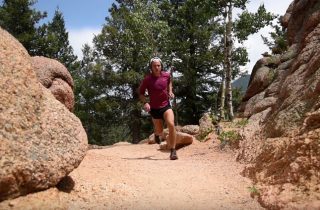
Zach Miller lives in a cabin in the woods halfway up Colorado’s Pikes Peak, and it’s a big reason why he’s become one of the world’s top trail runners in recent years. The 27-year-old Nike Trail Elite runner is one of the five year-round caretakers at historic Barr Camp, and although it’s an arduous job that requires a rather spartan lifestyle, it provides him with an ideal place to train for the world’s toughest trail races. We caught up with Miller this summer as he was preparing for the 104-mile Ultra-Trail du Mont Blanc race on Aug. 26-27 through parts of France, Italy and Switzerland.
The post A Day in the Life with Trail Runner Zach Miller on Pikes Peak appeared first on Competitor.com.
Q&A with Obstacle Racer Amelia Boone, the Modern Masochist
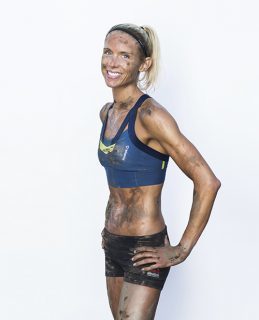
Photo: Chad Riley
Between her athletic prowess and her job as a corporate attorney for Apple, Amelia Boone is a quintessential competitor. The 32-year-old lanky blonde from San Jose, Calif., with a high tolerance for suffering ran her first Tough Mudder obstacle race in 2011 and was hooked. She won the World’s Toughest Mudder, a 24-hour race, in 2012, 2014 and 2015. Plus she was the Spartan Race World Champion in 2013, a three-time Death Race Finisher and recently placed second at the Sean O’Brien 100K, her longest ultra so far. These days, Boone says she is happiest when out on the trails.
You recently said you feel like you’re a runner. Why?
What I realized is that I loved obstacle racing, but my favorite part was the mountain courses and running up and down mountains. I like to run to see pretty things. Every run is an adventure to go see a sunrise or something fun.
What was your motivation for jumping into ultrarunning?
I don’t ever take the easy way. I’ve never been a person to want the participation trophy. If I’m going to push my body to those extremes, I want a carrot. Running the Sean O’Brien 100K, I didn’t know if I could qualify for the Western States 100, but I decided to see. Having that motivation is cool for me. If it means I fall flat on my face, then I fall flat on my face. I don’t want to play it safe.
What do you think about the growth of obstacle course racing?
Like any young sport that’s growing, it has an identity crisis, with people clamoring for standardization and pulling it in different directions. I got into obstacle racing because of the unknown component—I liked that every course and the obstacles were different. I don’t want that standardization. But some feel it’s necessary to make it a fully sanctioned sport.
Is your ability to suffer your best attribute?
I definitely think so. As races get longer, the mental part becomes more important than the physical part. There are certain people who have the ability to turn off that pain mechanism. That could be how I ran myself into a femoral stress fracture, because I don’t regulate the pain as well. There is a certain something special among endurance athletes and their willingness to suffer.
What’s the best racing advice you’ve received?
I don’t remember who told me this but it’s something I ask myself all the time. “If it’s not making you happy, why are you doing it? Are you enjoying this? Is this making you smile? Are you happy?” Especially for someone like me, with a full-time job outside of racing, this is supposed to enhance my life, not add to my stress. The moment I’m not having fun racing anymore is the moment I won’t.
Did you have any rookie mistakes in obstacle course racing?
The 2011 World’s Toughest Mudder was held in New Jersey in December. It was cold, and you basically end up running in a wetsuit for 24 hours. I had no wetsuit experience, and learned the hard way that you should never ever, wear a thong under a wetsuit if you are wearing one for 24 hours. I didn’t understand how bad chafing could be. The chafing is real. I also didn’t bother to lube anything. It was about a week before I could sit down.
The post Q&A with Obstacle Racer Amelia Boone, the Modern Masochist appeared first on Competitor.com.
The Pros and Cons of Small Races Versus Big Races
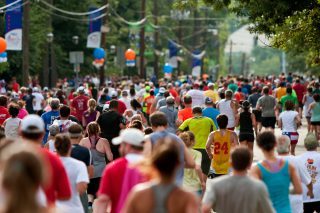
In 2014 the Peachtree Road Race in Atlanta had a total of 57,660 finishers. Photo: Shutterstock.com
People love to race. And they love to race together. The reigning king of big events in the U.S. in 2015 was the Peachtree Road Race in Atlanta with almost 55,000 finishers. That’s enough racers to stand shoulder-to-shoulder, single file from the starting line to the finish line of the 10K event, back to the start and then out again to the halfway mark.
Other big events like the Chicago Marathon are lined with spectators and packed with friends you haven’t met yet. Even if you’re not running with a buddy, there’s a good chance you’ll meet one in the tens of thousands of runners. In the past, participants have gotten married during the race, counting the other 37,000 people as wedding guests. In addition to the possibility of nuptials, events like Chicago have loads of amenities for finishers, including VIP packages that ensure post-race massages, special pre- and post-race meals and private bag checks.
Tyler McCandless, a pro runner and two-time U.S. Marathon Olympic Trials qualifier is an expert on races of all sizes. McCandless says the crowds of spectators can be one of the biggest advantages to big city events. “I remember distinctly at mile 16, it was the first time I could hear my feet hitting the ground when we finally got to an area of minimal spectators,” McCandless says of his experience running the Chicago Marathon. “There’s more ‘hype’ and simply more people, so the anticipation and excitement are much bigger. It certainly helps to feed off of the crowds.”
RELATED: Like a Crowd? These Are the Largest Road Races in the U.S.
There can also be a downside to that much energy. “After about an hour, having big crowds and lots of cheering can make executing a race plan difficult,” McCandless says. “It’s hard to keep adrenaline in check. It’s also something you can’t practice in practice.”
Logistics can also be an issue. “There’s more planning required to have a good experience at a big race. You can’t show up just before the start and expect to find parking,” he says. “Similarly, you can’t expect to get into any restaurant that’s in the main area of the race start or finish.”
On the other end of the spectrum are events like the Running With The Bears Marathon in Greenville, Calif., one of the smallest Boston qualifiers in the U.S. that boasts only 93 finishers in 2015 (last year race officials limited entries to 300 people). Still too crowded? Try the Turtle Marathon in Roswell, N.M., with only 13 finishers in 2015.
A behemoth in comparison, McCandless’ favorite little race is the Kauai Marathon, a small event on the small Hawaiian island of Kauai with roughly 250 finishers last year. It could be that he loves it because he’s won the event’s full marathon three times and its half marathon twice, but according to McCandless it has more to do with local turnout. “With the Aloha spirit and the community support, you feel like you know every competitor, every neighbor and every race organizer,” he says.
Don’t be surprised if pro runners get more involved at small races, too. “Last year I volunteered to run in a chicken suit before the Keiki (kids) races,” McCandless says. “I ran six races on this beautiful grass area—it was 80 degrees and the suit was so hot my rubber ‘beak’ kept filling with sweat. But my fiancée stood by and gave me Pedialyte from a bottle between races. Nearly 200 kids race the races, and the experience was incredible!”
Whether you’re more of big crowd runner or enjoy the small-time scene like McCandless, there’s a race for everyone. Here’s what to expect with each race size:
Think Big
New York City Marathon: According to the Association of International Marathons and Distance Races, New York was the largest marathon in the world last year with just over 49,000 participants. Nothing beats the thrill of crossing the Verrazano Bridge and seeing the first throng of spectators along Fourth Avenue, and there’s always big time bragging rights when you say, “I ran New York.”
Think Medium:
Napa Valley Marathon: With only 1,700 finishers in 2016, the Napa Valley Marathon in Northern California’s wine country is about as far away from New York City as one can get. A notoriously spectator-unfriendly course ensures peace and quiet for much of the 26.2 miles, but the beautiful sights along Napa’s famous vineyards guarantees plenty to think about. Special touches include a duffel bag in lieu of a plastic throwaway. And of course, there’s wine.
Think (Really) Small:
AK Salmon Run Marathon: With only 18 finishers in 2016, the AK Salmon Run is the definition of isolation. Held in Cordova, Alaska—an area with only air or sea access—the event epitomizes independence. Water stations? Sort of. According to race officials, water is “cached” along the course. Entry fee? Fifty bucks. There’s no cattle call to wade through when the gun goes off—everyone gets a spot on the starting line. In the event’s early years, each runner was assigned a follow vehicle to ward off possible bear or moose encounters. Fortunately, there hasn’t been a need yet.
RELATED: 25 Iconic American Road Races
The post The Pros and Cons of Small Races Versus Big Races appeared first on Competitor.com.
Latest Update on Karl Meltzer’s Appalachian Trail Record Attempt
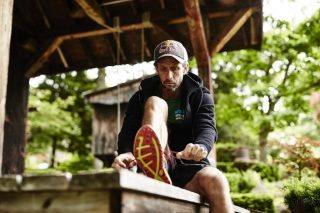
Karl Meltzer is battling to nab the Appalachian Trail record. Photo: Courtesy of Red Bull
Ultrarunning legend Karl Meltzer is three weeks into his attempt to break Scott Jurek’s Appalachian Trail record. The 48-year-old began his campaign in early August, hoping to best Jurek’s mark of 46 days, 8 hours, 7 minutes set last year for the 2,189-mile trail that stretches from Mount Katahdin, Maine, to Springer Mountain, Georgia.
According to a recent crew report, the going has gotten tough for the runner known as “Speedgoat.” However, if anyone has the fortitude to get back on track it’s Meltzer, the winner of 57 ultra-distance races, including the daunting Hardrock 100 in Colorado for a record five times.
MORE: Follow Karl Meltzer’s Appalachian Trail attempt on his Red Bull website.
An update from the trail on Day 20 was described as, “an all-around rough day for Karl.” His support crew expressed concern as Meltzer, “started having pains in his shins early in the day which made it difficult to navigate and run. The pain also took a mental toll on Karl so Mike decided to join in on the trail for about eight miles. Mike mentioned that Karl’s knee kept buckling during their run—one can only imagine the pain that Karl must be in.”
RELATED: Karl Meltzer Sets Sights on Appalachian Trail Record
The crew reported that they iced his legs a bit longer than usual and tended to both his shins and knee. Meltzer will also start wearing a wrap around his ankle. “Though the plan was to complete 50 miles on Day 20, Karl only completed 35.2 of those miles due to the challenges,” reads the report. “On a physical and mental journey of this magnitude, the gravity of knowing when to push yourself and when to hold back is immense…Karl will be up and at it again early in the morning as he heads further south into Pennsylvania.”
RELATED: Karl Meltzer Plays 230 Holes of Golf in 12 Hours
The post Latest Update on Karl Meltzer’s Appalachian Trail Record Attempt appeared first on Competitor.com.
August 24, 2016
Trail Runner Brandon Stapanowich Runs Up and Down Pikes Peak Four Times
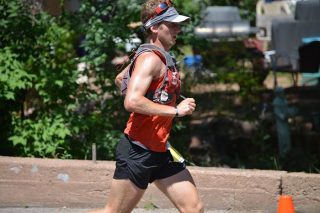
Brandon Stapanowich turned the Pikes Peak Ascent and Marathon into an epic running adventure. Photo: Dave Labosky
“Pee-ew!”
When you hear someone say this, it typically means their olfactory senses have detected something very stanky, right? Well, those who came across Brandon Stapanowich on Sunday afternoon in Mantiou Springs, Colo., probably would have forgiven his staunch odor after what he accomplished on Pikes Peak over the weekend.
Including Saturday’s 13.32-mile Pikes Peak Ascent and Sunday’s 26.2-mile Pikes Peak Marathon, the 31-year-old runner ran up and down the 14,115-foot mountain four times and accumulated 100 miles of running and an eye-popping 31,200 feet of elevation gain in the process.
As if the Pikes Peak races aren’t hard enough, a handful of people every year enter both the Pikes Peak Ascent and Pikes Peak Marathon with the chance to be officially recognized as a Pikes Peak Doubler. That’s how I spent my weekend and I thought that was tough—and it was—but that was just child’s play for Stapanowich, who is known as “Stank” by local runners and his Team Colorado teammates.
Stapanowich has a reputation for pulling off some rather freakish running adventures in Colorado, many of which occur on the the trails in Manitou Springs. He’s also done something he calls the Inclinathon—13 times up and down the savagely steep Manitou Incline, to accumulate about a marathon’s distance on the trail that is just short of a mile—and, of course, he’s also done a 24-hour rendition on the Mantiou Incline known as the UltraInclinathon. He’s also one of only a handful of finishers of Nolan’s 14, a dastardly hard 100-mile route with 90,000 feet of vertical gain as it traverses 14 peaks higher than 14,000 feet through Colorado’s highest mountain range.
RELATED: America’s Toughest Trail—The Manitou Incline
In fact, it’s not the first time Stapanowich has turned Pikes Peak into his own personal 100-mile fun run, either. He completed his first “Pikes Ultra” (aka the “P.U.”) in September 2013 amid cold weather, high winds and blowing snow. (During that one, he battled sub-zero temperatures through the night and at one point succumbed to getting a few hours of sleep in the fetal position while hugging the composting toilet at Barr Camp at 4 a.m. just to stay warm.)
On the heels of setting a new self-supported record for the 485-mile Colorado Trail about a month ago—he covered the route from Durango to Denver in 9 days, 14 hours, 28 minutes—Stapanowich was keeping his next fantastical adventure quiet because he didn’t know how his body was going to be feeling after such a long effort.
“It was something that I had a hard time committing to as I wasn’t sure if I’d be recovered enough from finishing Colorado Trail,” he said. Stealthily, he jumped into race the Pikes Peak Ascent on Saturday with a realistic outlook and completed the official course up the mountain in 3:27:23—a time good enough for 141st place overall out of 1,702 official finishers, not to mention 19th in his age group. He ran back down to complete his first roundtrip, then immediately ran up and down the mountain again, finishing his second roundtrip just as the final bit of daylight was fading into darkness.
“I went into it planning on just taking one lap at a time,” Stapanowich said. “That way, if the weather turned or my body wasn’t feeling right, there was no shame in stopping. The decision to go all in wasn’t made until around 9 p.m. as I came down from my second trip.”
When he got back down to Manitou Springs, he saw people out and about, enjoying their Saturday night at the local pubs and restaurants. He was admittedly tired and hungry, and ready for a nice meal and maybe a hard cider, too.
So what was he thinking?
“I had a decision to make,” he said. “I could go home, sleep, and come back in the morning for the marathon with a respectable 75 miles for the weekend and no one would care. Or, with 10 hours before the marathon start, I could complete my third lap in the darkness, maybe snag a couple winks of sleep, and be ready for the final trip in the morning. Still, probably no one would care, but I’d know that I’d chosen to do the hard thing.”
RELATED: Do Something Epic—Planning an Unsupported Adventure Run
Hard thing, indeed, because the thought of 100 miles with over 31,200 feet of gain is not soft and most people barely make it up once. But Stapanowich has set his struggle-meter and mental-flux-capacitor on very high.
So, without any fanfare or anyone supporting him, he went back up the Barr Trail and reached the summit of Pikes Peak for a third time in the middle of the night. He came back down in the wee hours of the morning and had enough time to get about an hour or so of sleep in his car.
When his alarm went off, he headed over to the starting line of the Pikes Peak Marathon and ran his second official race of the weekend, once again running to the top of the mountain and back. He finished that race in 6:07:34—about two and a half hours behind Alex Nichols’ winning time of 3:40:29—and although Stapanowich was still good enough for 135th place out of 696 official finishers, his more impressive stat was his cumulative time of 30 hours, 7 minutes, for the four-lap, 100-mile adventure.
RELATED: A Look at the Top Fastest Known Times and Trail Records from 2015
“Some people have asked, ‘Why?’ and I still wonder the answer to that question. Then I wonder why do we do anything,” Stapanowich said in a moment of reflection on Monday night. “I guess I just enjoy imposing challenges on my mind and body and the feeling of achievement when they work together to overcome a difficult situation. When the adversity is self-imposed, it often teaches me lessons that are applicable in other scenarios of my life where I feel like I have less control. I think for this Pikes Peak Quad trip, the lessons have been about choice and the experience of pain without suffering.”
If you think Stapanowich is just a wacky nut job looking for publicity, he’s far from that. He’s as authentic and as tough as they come, plus he has the gift of being able to think outside the box. Plus, he gives back on a daily basis.
When he’s not running, he works full time as a children’s physical therapist in a program that serves special needs students in several schools in Manitou Springs, Cripple Creek and Woodland Park. He’s also the founder and developmental director of the Pikes Peak chapter of Achilles International, an all-inclusive running/walking/biking/moving group based in Colorado Springs. Stapanowich leads weekly group runs that pair dozens of disabled and able-bodied athletes and advocates active lifestyles to promote personal achievement and enhance self-esteem.
Stapanowich admits he gets inspiration from a lot of people and places, but certainly his connection with the Achilles group is a big part of it.
“I like to think of these escapades as a form of artistic expression,” he said. “And like a poem or painting, the ‘meaning’ behind the best pieces aren’t concrete, but are left to the interpretation of the viewer. And like any artist, my hope is that it makes you feel something. Inspired, hopeful, motivated to push limits and challenge assumptions.”
RELATED: Joe Gray Breaks Matt Carpenter’s Manitou Incline Record
MORE: Watch a Video Interview with Stapanowich from PikesPeak Sports
The post Trail Runner Brandon Stapanowich Runs Up and Down Pikes Peak Four Times appeared first on Competitor.com.
U.S. Triathlete Gwen Jorgensen to Make Marathon Debut in New York
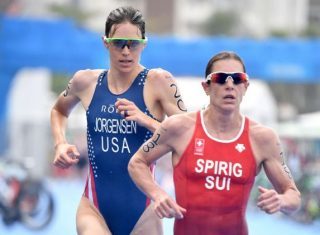
American triathlete Gwen Jorgensen, who won gold in Rio, will make her marathon debut at the New York City Marathon on Sunday, Nov. 6. She will join an already stacked American professional athlete field that includes U.S. Olympic distance runners Molly Huddle and Kim Conley, who are both also racing 26.2 miles for the first time.
“What a thrill it is to have Gwen join our amazing group of American professional athletes for the 2016 TCS New York City Marathon,“ said Peter Ciaccia, president of events for New York Road Runners and race director of the TCS New York City Marathon. “We have so much respect for what Gwen achieved in Rio and how well she represented the USA. Her gold medal proved once again that she’s the world’s top triathlete.”
RELATED: Molly Huddle to Make Marathon Debut in New York
The Olympic title was particularly special for Jorgensen, who had packed up and moved to Australia and then Spain to train full-time after finishing 38th at the London 2012 Olympics because of a flat tire. “This has been such an incredible year for me, and I thought what better way to continue to challenge myself than by running my first marathon,” said Jorgensen. “The triathlon will always be my first love, but I am really looking forward to the marathon and cannot think of a better place to make my debut than New York City.”
Jorgensen will join an American professional athlete field that also includes 10 men and 11 women who participated in the 2016 U.S. Olympic Team Marathon Trials. Three other athletes will also be making their marathon debuts, including Olympic 5000-meter runner Kim Conley and NYRR Team for Kids Ambassador and Olympic 10,000-meter runner Molly Huddle, who broke the 10,000m American record at the Rio Olympics.
The 2016 TCS New York City Marathon will be televised live on Sunday, November 6, on WABC-TV, Channel 7 in the New York tristate area from 9:00 a.m. to 2:00 p.m. ET, and for the rest of the nation on ESPN2 from 9:00 a.m. to 12:30 p.m. ET.
The post U.S. Triathlete Gwen Jorgensen to Make Marathon Debut in New York appeared first on Competitor.com.
Photos: Sneak Peek at New Running Music & Wearable Tech Gear
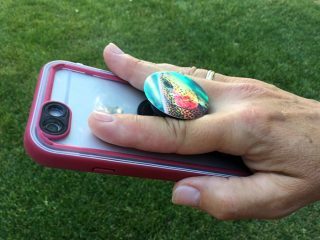
Wearable tech remains a white hot category in running. The massive Aug. 3-6 Outdoor Retailer Summer Market trade show in Salt Lake City showed off a lot of new and improved trackers, watches, music accessories and tech apparel, but it also coincided with a big week of announcements and releases of wearable fitness tech for the upcoming holiday season. Click through the photos below for a look at some of the new wearable tech gear you’ll see in stores this fall and winter.
RELATED: Take a Sneak Peek at 2017 Running Shoes
Photo Gallery
1 of {count}
Back to Start
View Larger Image
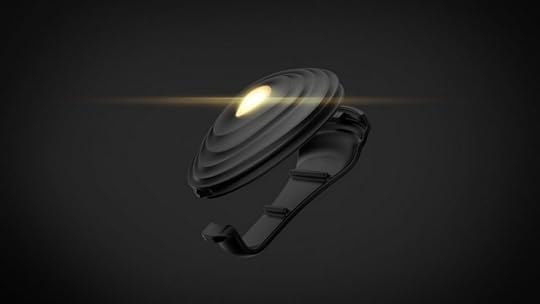
Stryd
Stryd, the first running-specific power meter, has smartly been switched from a chest heart rate strap device to a shoe-clip sensor. From its inception, Stryd ($199) has tracked a variety of data, delivering heart rate, cadence, impact, movement, form, altitude and power values to its smartphone app and several smartwatch brands. The Stryd system offers power value in real time, with no data lags like most heart-rate monitors. It serves up both audio feedback on the run and post-workout feedback for long-term improvement. Added to the 12 metrics that Stryd quantifies into run power is leg spring stiffness, which has been correlated to running efficiency by scientific studies, but never before available in a wearable. Leg spring stiffness can be increased by form changes and conditioning. (Available in September.)
View Larger Image
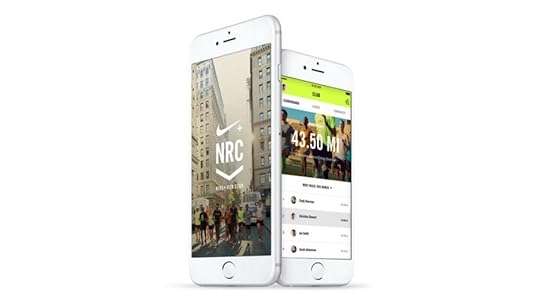
Nike+ Run Club App
Nike released a completely redesigned, updated version and renamed version of its popular Nike+Running app. Run Club, as the name implies, increases ways to sticker and share runs, be inspired and motivated through hashtag-based challenges, leaderboards and by following the run tips, Nike+ music mixes, and community elements in a colorful feed. Run with a Garmin, Wahoo, or Tom Tom device? You can now bring that data into Nike+Run Club. The app now incorporates an adaptive coaching system that starts with your goals and run volume, builds a plan, and then is supposed to respond to your performance and needs as you use it. Tested with Nike’s global coaches and elites, the app will adapt to your plan based on your actual run performances along with short, timed, audio coached benchmark runs. (Available now)
View Larger Image
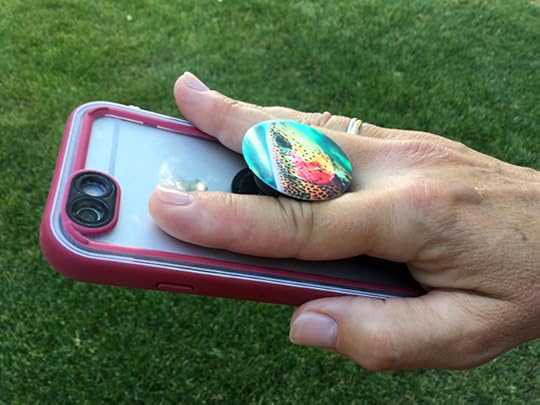
PopSockets
These colorful, ingenious, collapsible stick-on disks ($10-$15) immediately caught our eye at the trade show. Pop them out to one of two positions and slip your fingers against the soft ridged bellows below the disk to securely hand carry your phone. Run app stats are a turn of the wrist away and fast pictures or texts on the go are a breeze. Reusable for multiple times, they also become a video view stand and headphone cord wrap. (Available now.)
View Larger Image
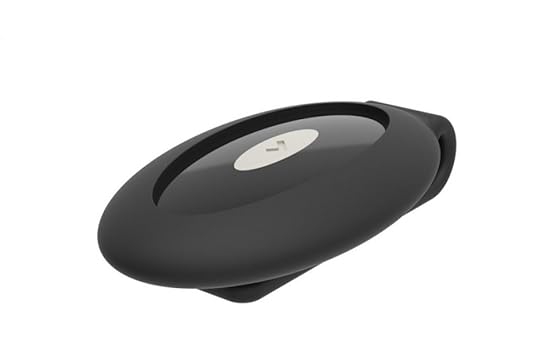
Lumo Run
Lumo Run offers two ways to track running data and improve running form and efficiency through a clip-on sensor pod ($100) or sensor-integrated apparel—running shorts for men ($199) and running capris for women ($199). Lumo’s
sensors capture accurate running biomechanics
through core body movements. The Lumo system tracks five key running metrics—cadence, bounce, braking, rotation and drop—and offers audible real-time performance feedback for each one, as well as post-run summaries and coaching tips. The in-run tips and audio coaching are easy to do and effective, with post-run exercises addressing the areas that need improvement spot on.
View Larger Image
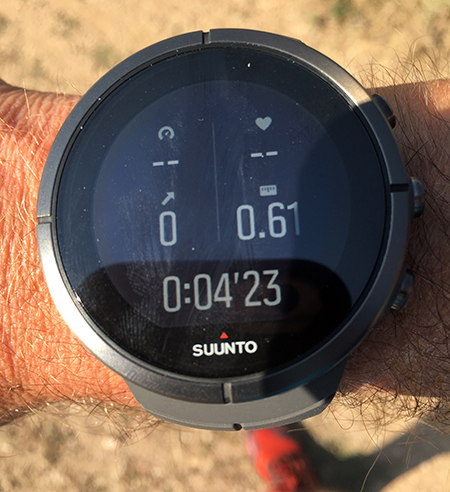
Suunto Spartan Ultra
We have been trail and road running with Sunnto’s new top of the line, multisport, mountain-focused GPS watch, and we liked it for a lot of reasons. A beautiful, light and easy on the wrist “big” watch, the Spartan Ultra ($699 to $799) has a sapphire touch screen. The wide viewing angle, high-resolution, color screen with classy modern analog and digital watch faces sets a new standard for on-the-run bright light multi-data field legibility and even navigation. It's much more user friendly than most high-end smartwatches we've tested, thanks to a much more intuitive functionality. (Available now; a slightly thinner triathlon-focused Spartan Sport will arrive later this year.)
View Larger Image

Strava Beacon
Strava Premium users were upgraded in mid-August with Beacon, a safety and race tracking feature which allows up to three contacts to get a text when you start a run, follows you on a map, and finally receives a text when you stop recording or have a low battery. The free version recently received an upgrade to the large, super clear display format formerly reserved for Premium.
View Larger Image
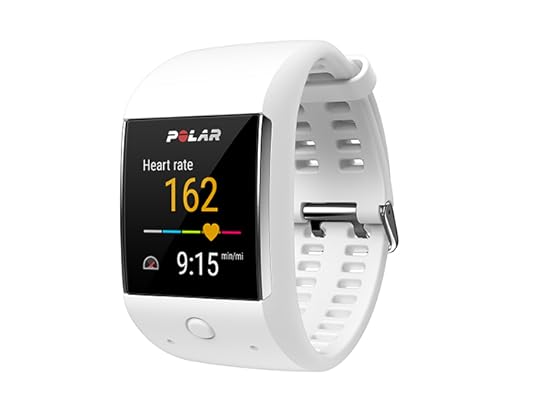
Polar M600 Smart Watch
Heart rate monitoring pioneer Polar’s first wrist-based heart rate GPS watch, the sleek, color screen M600 ($330) is based on Google Android Wear. You get Polar’s excellent training watch features and platform along with the open Android Wear operating system, dramatically extending the 24/7 utility and customizability of the watch, particularly for Android phone users. They can access the 4000 Android Wear apps and even turn the watch into a standalone music player. In our initial testing we loved the small size, very high-resolution screen and phone connectivity. We noticed all-day battery life is shorter than conventional GPS “smartwatches” when phone connected, about two days Android, one day iPhone or from a full charge up to eight hours in training mode. (Available now.)
View Larger Image
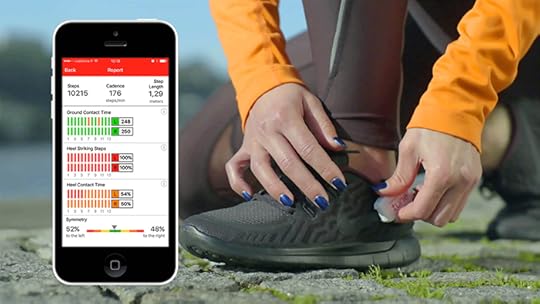
Tune Sensor Insoles and App
New from Portugal-based Kinematix, Tune ($200) is a sensor and app package that seeks to reduce your overall ground contact time and how much of your contact is at the heels, both seen as keys to running efficiency by some studies. Data comes from a pair of very thin (2mm) insoles embedded with force sensors and accelerometers that slip under your usual shoe sock liner. The GPS app provides in-run audio cues. The insoles can also be paired to Android smartwatches with GPS to go phone free. After the run, performance can be reviewed in detail augmented by the incorporated GPS tracking. Exercises based on crunching the data, complete with video demos, are provided, and then personalized after a period of data capture. (Available in late September.)
View Larger Image
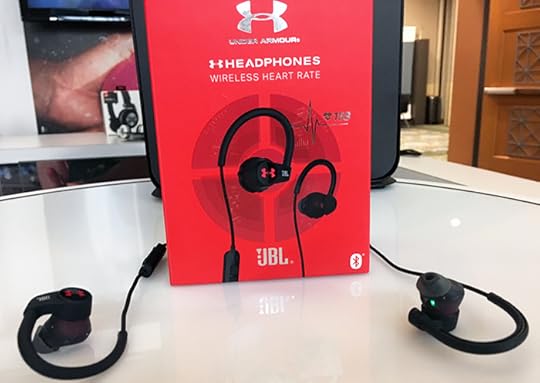
Under Armour JBL Wireless Heart Rate Monitoring Headphones
These tiny, comfortable Bluetooth earphones ($200) incorporate a military-grade heart rate optical sensor, used in fighter pilot helmets. Swipe on an ear bud and hear an audible read out of your heart rate. It pairs with most run apps, and we tried it with both Under Armour’s MapMy Run and Strava. (Available in October.)
View Larger Image
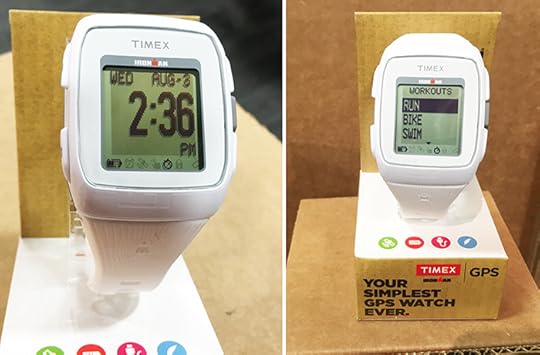
Timex Ironman GPS Watch
Billed as “the Simplest GPS Watch, Ever,” the latest sport watch from Timex ($99) has intuitive, one-button functionality, a 12-hour battery life (even in full GPS mode) and charges with a micro USB port—meaning no proprietary connection cords—to download workouts (no app) and there is an optional color strap ($14.99). Powered by the latest fast acquisition GPS chip, this watch does all the basics of distance, average pace and time. It has a simple triathlon mode of run, swim, ride, but it will only capture time in the water. (Available now.)
View Larger Image

Whoop
The Whoop system seeks to help athletes understand how well they are sleeping and responding to stressors of workouts, and life, so as to better inform what level of effort (or any stress) may be advisable for the day. It samples heart rate 24/7 and more frequently than other bands at up to 100 times per second. Whoop captures and interprets the difficulty in capturing key metric of Heart Rate Variability (HRV). Studies have shown HRV occurs in the last 5 minutes of slow wave sleep and is key to understanding just how ready you are for a planned workout or any stressors that day. Originally developed for and only offered to pro and elite athletes, Whoop band and system are available to the public on a pre-order basis. (Available in December.)

More Galleries
The post Photos: Sneak Peek at New Running Music & Wearable Tech Gear appeared first on Competitor.com.
August 23, 2016
Gear We Love: August
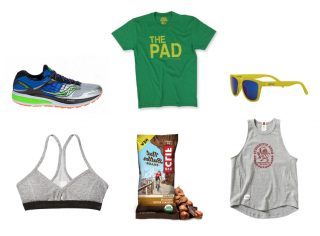
The last month of summer means our editors are getting the most out of their favorite hot-weather gear, including versatile running shoes, cool tees and tanks and colorful sunnies.
Photo Gallery
1 of {count}
Back to Start
View Larger Image
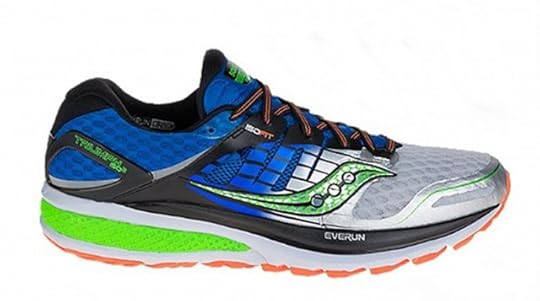
Saucony Triumph ISO 2, $150
Packing for a week’s vacation at the beach forces tough decisions. Amid the surf trunks, T-shirts and dinner wear I had just enough room for a few running items. Fortunately, the Saucony Triumph ISO 2 proved to be a versatile footwear choice. The newly introduced Everwear foam offered excellent ride and cushioning, making ocean-side long runs even more blissful. It wasn’t all gentle rollers though—on the few occasions when the pace got hot the Triumph ISO 2 felt sprightly underfoot, assisted by a very respectable 10.2-ounce weight. The upper is as comfy as a cotton hoodie, especially the puffy tongue. —Mark Eller, contributing editor
View Larger Image

This post-run T-shirt celebrates the tavern in Eugene, Ore., where Steve Prefontaine famously tended bar for several years, starting shortly after the 1972 Olympics up until he passed away. (Also where, many years later and far less famously, my friend also once worked and we’d spend a lot of nights shooting pool.) Along with the nostalgia this shirt brigns, it's also nice and soft, and comes in a University of Oregon colorway, and what looks like Marshfield High School colors too? —Adam Elder, managing editor
View Larger Image
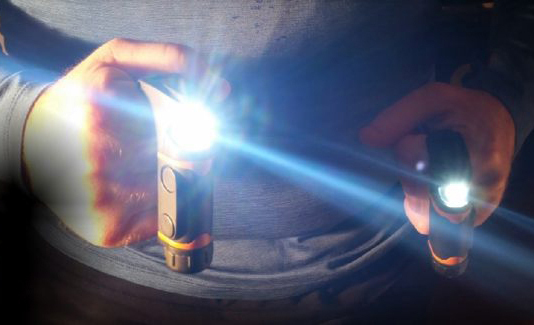
Knuckle Lights, $60
An extraordinary upgrade from the original Knuckle Lights that came out a few years ago, these rechargeable handheld wide-flood LED lights offer a max output of 140 lumens, which will brighten up technical trails during an ultra race or paved roads during a Ragnar Relay on the darkest of nights. That high-end output will last for about 4 hours, but at the slightly lower setting they’ll burn for up to 18 hours. I took a pair of these as my backup lights while pacing a friend for 25 miles in the Leadville 100, and to say they were reliably handy when I discovered my main headlamp somehow had a dead battery when I left the aid station is a gross understatement. They’re bright, light and easy to carry—the soft silicone straps loop smartly and easily over your fingers, which allow the lights to point in the direction you’re running—and easy to store in their recharging cradle. —Brian Metzler, editor-in-chief
View Larger Image

As a person who lives an active lifestyle, I'm a big fan of basic and simple (not the bright neon synthetics a lot of brands seem to carry) run apparel that can double as casual wear too. Tracksmith's Grayboy Tank is a staple in their women's line—it's a cotton/rayon blend that's super soft but also wicks sweat like magic. Plus, their newest print "Stefanitis Agon" celebrates the Olympic spirit. Its translation: Competition for a simple wreath, as opposed to money—a perfect tank for the running purist. —Emily Polachek, associate editor
View Larger Image
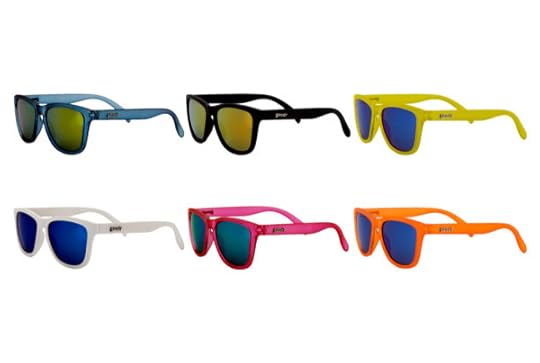
It's too good to be true, but you can actually get a quality pair of running sunglasses that won't break the bank. For $25, these sunglasses cover all the bases: a no-slip nose grip, a tight fit with minimal bouncing, and polarized lenses. Plus, they're super durable which make them perfect for outdoor runs, and, more importantly, you won't be crying over the expense when you accidentally lose a pair. —Emily Polachek, associate editor
View Larger Image

Outdoor Voices Steeplechase Sports Bra, $55
It may not look like it, but this bra gives quite a bit of support and coverage for its minimal design. The spandex band combined with the crossback straps provide sturdy support, while the keyhole middle acts both as extra ventilation and as a stylish accent. Removable padded cups allow for a more customizable fit as well. —Emily Polachek, associate editor
View Larger Image
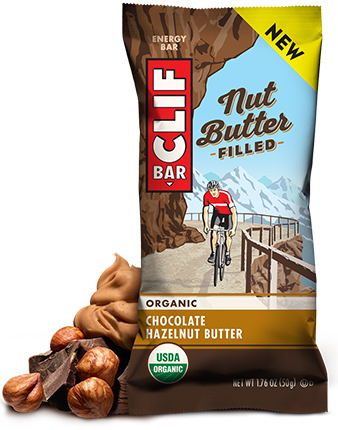
Clif Nut Butter Filled Bar, $1.99 each
Normally I’d rather starve than eat bars or other fitness snacks, but this new Clif Bar with a chocolate-hazelnut-butter-filled center was impossible to turn down when offered to me here at Competitor HQ. If you have a weakness for Nutella, peanut butter or almond butter, you’ll probably like this new line from Clif too. Each bar contains 230 calories and certified organic. —Adam Elder, managing editor

More Galleries
The post Gear We Love: August appeared first on Competitor.com.
August 22, 2016
Photos: Scenes from America’s Finest City Half Marathon
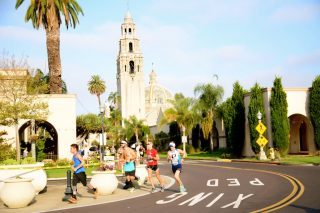
Nearly 5,000 elite and recreational runners from 46 states and 19 countries participated in the 39th edition of the America’s Finest City Half Marathon and AFC 5K held Aug. 21 in San Diego. The scenic and fast 13.1-mile half-marathon course sent runners from the historic Cabrillo National Monument in Point Loma, past Fort Rosecrans National Cemetery, along the San Diego Bay and through downtown San Diego before winding up near the Hall of Champions in Balboa Park.
Eliud Ngetich of Kenya was first across the finish line, winning the half marathon in 1:04:10, while American Scott Fauble finished two seconds back for second place (1:04:12). Kenyan Jane Kibii captured the women’s crown in 1:15:04, while three-time Olympian Jen Rhines, 42, placed sixth overall among women (1:18:36) and first among masters women.
Get a glimpse of the race by scrolling through the photos below.
Photo Gallery
1 of {count}
Back to Start
View Larger Image
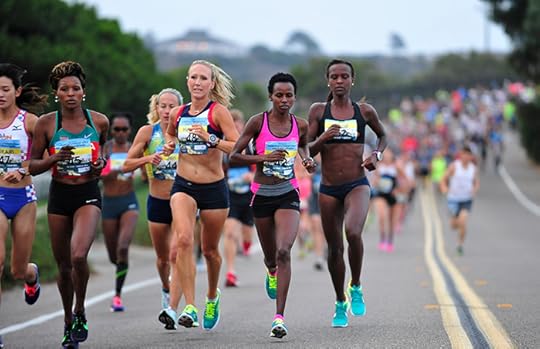
America's Finest City Half Marathon
Photo: Rich Cruse/CrusePhoto.com
View Larger Image
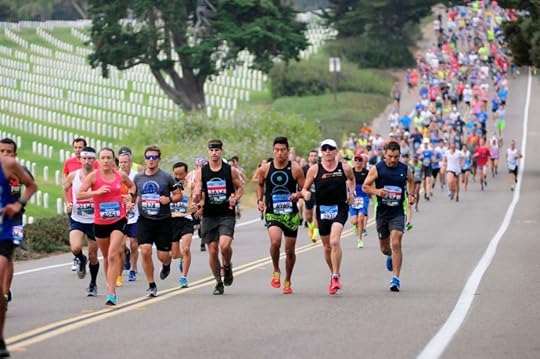
America's Finest City Half Marathon
Photo: Bob Betancourt
View Larger Image

America's Finest City Half Marathon
Photo: Bob Betancourt
View Larger Image
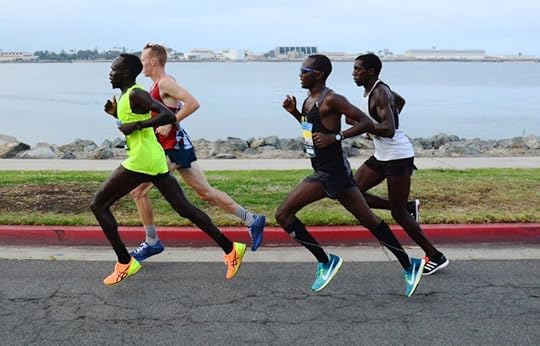
America's Finest City Half Marathon
Photo: Bob Betancourt
View Larger Image
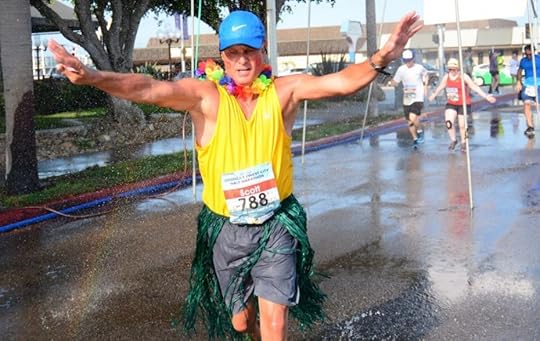
America's Finest City Half Marathon
Photo: Bob Betancourt
View Larger Image
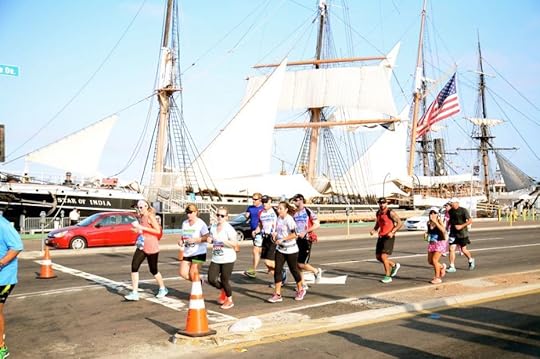
America's Finest City Half Marathon
Photo: Bob Betancourt
View Larger Image

America's Finest City Half Marathon
Photo: Bob Betancourt
View Larger Image

America's Finest City Half Marathon
Photo: Rich Cruse/CrusePhoto.com
View Larger Image
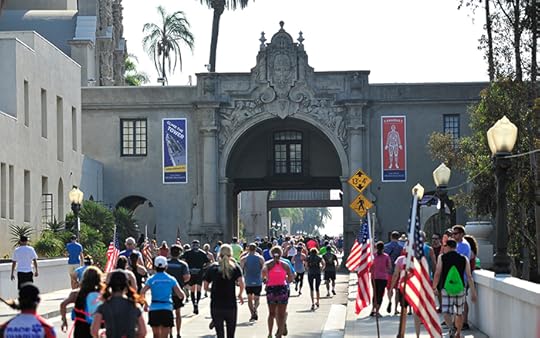
America's Finest City Half Marathon
Photo: Rich Cruse/CrusePhoto.com
View Larger Image
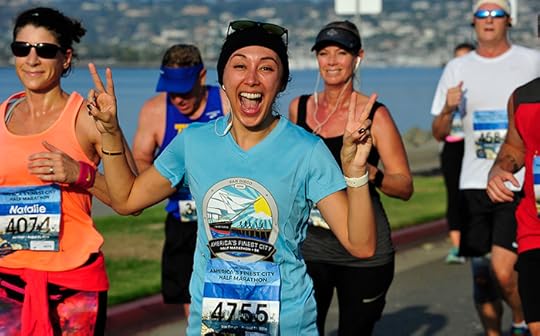
America's Finest City Half Marathon
Photo: Rich Cruse/CrusePhoto.com
View Larger Image

America's Finest City Half Marathon
Photo: Bob Betancourt
View Larger Image
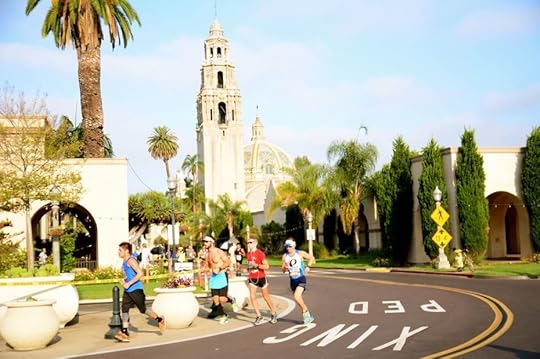
America's Finest City Half Marathon
Photo: Bob Betancourt
View Larger Image
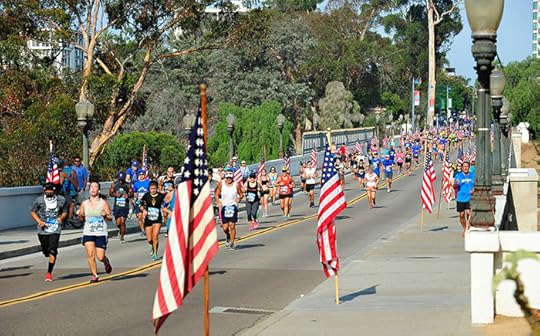
America's Finest City Half Marathon
Photo: Rich Cruse/CrusePhoto.com
View Larger Image
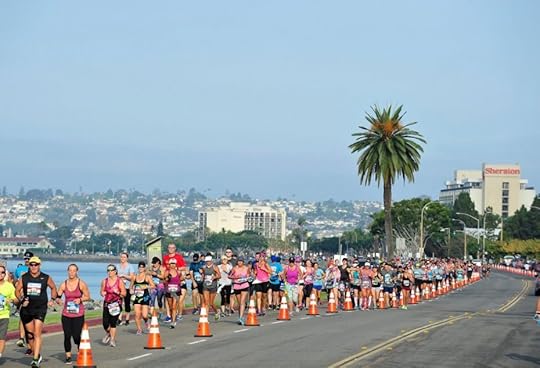
America's Finest City Half Marathon
Photo: Rich Cruse/CrusePhoto.com
View Larger Image
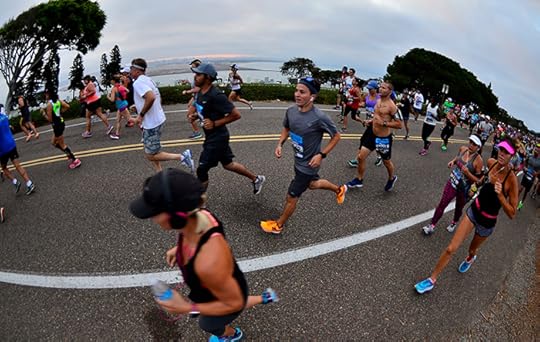
America's Finest City Half Marathon
Photo: Rich Cruse/CrusePhoto.com
View Larger Image
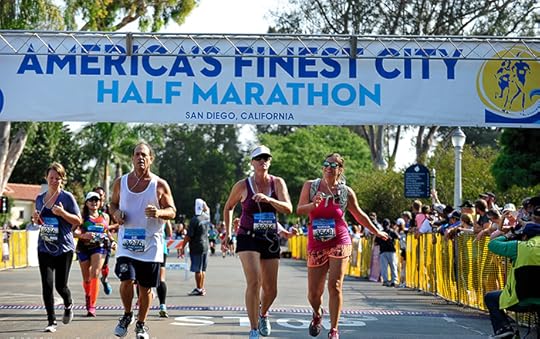
America's Finest City Half Marathon
Photo: Rich Cruse/CrusePhoto.com

More Galleries
The post Photos: Scenes from America’s Finest City Half Marathon appeared first on Competitor.com.
Ryan Hall's Blog
- Ryan Hall's profile
- 21 followers



